30 tips to increase your qualified appointments
It’s true that closing a deal is the most exciting and important step in the sales process.
But you should know that there’s no chance of reaching this stage without having recorded an initial meeting with a potential customer.
That’s why, if your sales team is struggling to get appointments with prospects, it’s important to review your prospecting strategy to achieve a better conversion rate.
When is the best time to ask a prospect for an appointment ?
What attitude should you adopt to increase your chances of getting a positive response ?
How can you take advantage of technology to improve the effectiveness of your prospecting campaigns ?
We’ve put together a list of 30 useful tips and tricks for increasing the number of qualified appointments and potentially closing new sales.
Let’s find out together !
1. Set a clear goal before you start
As with any business project, it’s important to have a clear goal in mind before getting started.

In the current context, the objective may seem unique and fairly obvious : to succeed in getting the prospect to engage more fully in the conversation.
However, qualified appointment setting should revolve around two objectives :
- The first short-term objective is to obtain the prospect’s approval to book an appointment.
- And a second objective is to close the sale.
When, during your first interaction with a prospect, you rush to reach the ultimate goal (closing the deal), there’s a good chance you’ll miss the second goal. That’s why it’s important to clearly define your objectives before you start.
2. Getting to know the prospect
Generally speaking, the primary cause of failure in sales appointment setting lies in serving the same template phone script or e-mail to all prospects.
Of course, we agree that the content you deliver to your prospects should contain similar elements and calls to action. But for a more impactful message, you should try to personalise your content just a little, depending on the recipient.
This way, the prospect will feel more concerned and be more inclined to give a sincere “yes” to your request for an appointment.
But for this to really work, you need to gather a minimum amount of information about the prospect. To help you do this, you can :
- Check your LinkedIn profile:
Here you’ll find information about his work and his interactions on the network.
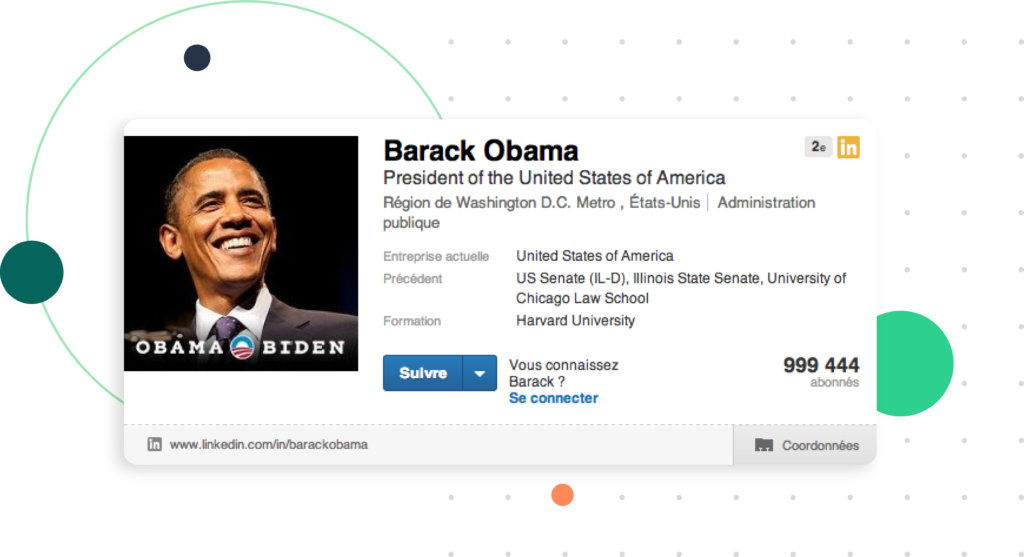
Source : Chacun Sa Route
- Google him: The search engine may return important pages on which his name is mentioned. This will help you discover their motivations, personality, values and other useful information that you can use to personalise your message.
- Visit your professional website: If the prospect has a website, this would also be an excellent way to find out more about his company by visiting it.
3. Target the right prospects
You can put together the best team of salespeople to make new sales appointments for your company. But when you don’t target prospects who are genuinely interested in your products or services, the campaign is likely to be in vain.
So once you’ve defined the objectives of your appointment-setting campaign, it’s important to define the profile of your target audience too.

Source : Guarana Marketing
What industry do you want to target? For what type of business are your services best suited? Think about it carefully and build up your company’s ideal customer profile.
4. Write a catchy script
Although a good salesperson needs to be able to improvise, it’s always a good idea to have a well-written script ready.
The script serves as a kind of roadmap, so that your sales reps don’t have to think too hard about what to say to the prospect and when. As a result, they’ll be better able to listen to prospects and adapt their script to their realities.
5. Look after your voice
In business, appearance usually counts for a lot when it comes to attracting the other party’s attention and consideration.
But since in a phone call, the prospect can’t see what you look like, you’ll need to take care with your voice to sound more professional.
Indeed, when a prospect picks up the phone and hears a voice that’s too high-pitched or shaky, it can sound less professional.
What’s more, even if you have a deep voice, speaking too fast or having a shaky voice can give off a certain uncertainty.
It’s a good idea to record your voice so you can listen to it again and find out how to improve it for a better presentation.
6. Always ask for the prospect's availability
When you contact a prospect by phone to ask for an appointment, don’t rush into unpacking your sales pitch. Always be sure to ask at the start of the conversation whether you’ve come at the right time.
It’s a bit like knocking on an office door : it’s always a good idea to ask the person if it’s a good time to talk.
The scenario is much the same with a phone call. After all, you’re contacting someone out of the blue, so you can’t rule out the possibility that they could be in the middle of a business meeting or customer service call.

Source : Isarta
That’s why you need to make sure you don’t interrupt his activity by asking him if he’s available for a quick chat.
This shows you respect him and his schedule. If he’s still in favor of continuing the call, make an effort to pay close attention when he speaks, so that you’re aware of his difficulties and expectations.
In the event that you receive a “no” to continuing the call, don’t immediately take it as a failure – it can happen even with an interested prospect.
In such a situation, it’s important not to force the issue – you won’t get anything out of it. Instead, respect their availability and ask if you can call them back another time.
But at the same time, it’s important to recognise that when you ask a prospect about their availability during a cold call, chances are they’ll say “no”.
This is probably one of the most controversial pieces of advice in sales, and to find the right balance, I suggest you start by asking for availability.
If you then receive a negative response, you can gently insist that the conversation will only take a little while. If the prospect still refuses, you’ll have to call back another time.
7. Introduce yourself in a few seconds
Generally speaking, when we call a number for the first time, we always take care to introduce ourselves before talking about the subject of our call.
Since we’re talking about a cold call here, the first few seconds are decisive for the rest of the conversation. When you waste too much time introducing yourself, your caller may get bored and end the call sooner than expected.
This means that you have approximately twenty seconds to make a short presentation, but one that’s attractive enough to hook the prospect for the next stage.
8. Propose a clear sales pitch
Once you’ve got the prospect’s approval to continue the conversation, you’ll need to present your product or service well first, before asking for an appointment to get them to find out more about the product.
And to remain consistent in this initial presentation of the product, it would be useful to prepare a solid sales pitch, but one that is above all clear.
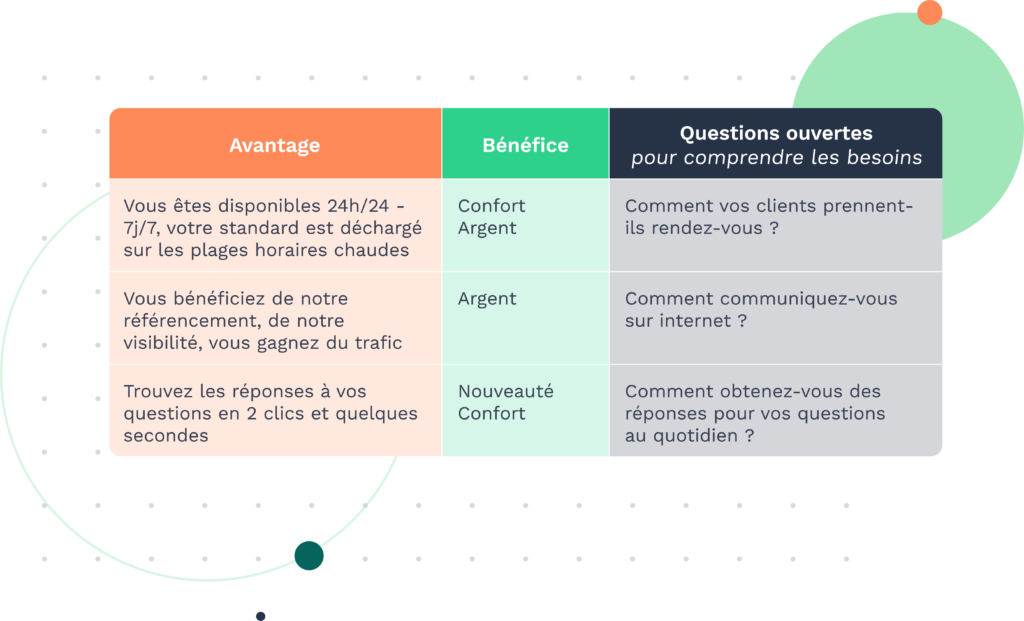
Source : https://blog.mybizdev.io/pitch-commercial-percutant-exemples-argumentaires-de-vente
Since you don’t have a lot of time, get straight to the point with 1 or 2 sentences that show how your solution can really help the prospect.
You can do this by :
- Explain how your product or service can be useful to consumer profiles like him;
- Start with common examples of problems your products have already solved. You could put it this way, for example «… we help companies in this niche to solve such and such a problem ».
- Present the case of a former customer you’ve already helped. You won’t have to tell the whole story, but you will have to say explicitly how you helped company A solve problem B and achieve results C.
Whatever approach you choose to present your product/service, it’s important to keep in mind the immediate goal, which is to get the prospect to agree to a meeting to find out more.
This is not necessarily the time to try to convince them to buy the product, so avoid details and keep your sales pitch concise.
9. Stay professional but above all natural
It’s true that you have to learn your script by heart, but that’s no reason to spout it like a robot. Stay natural when conversing with your prospect, as this will make the conversation more engaging and persuasive without being aggressive.
When you approach an aspect that’s provoking a bit of debate, don’t force the issue for fear of driving the prospect away. Also, take the time to listen carefully, and show that you’re genuinely interested in his case by asking coherent questions related to what he told you.
To make sure you don’t miss anything, you can take notes as you go along, repeating important information if possible to ensure you don’t make any mistakes.

Source : 123rf
And be polite. This will probably be your first interaction with the prospect, so you need to leave a good impression so that next time they’ll want to meet you.
10. Stay natural
When approaching a prospect over the phone, it’s important to be as natural as you are with your family and friends.
Using a natural, relaxed tone can help your prospect feel more confident and open up in conversation.
But be careful not to overdo it – there’s a certain balance that harmonises things. You don’t want to be too natural either – after all, you’re in a professional field.
Avoid using overly technical jargon. It’s not a given that the person you’re talking to has the same level of knowledge of your sector as you do. You’ll need to use terms that everyone can understand.
11. Be conversational
This ties in with the previous point. Even if you’re in a professional setting and already have a well-written script, always go with the flow and keep it conversational.
12. Be assertive
For many salespeople, the first fear of being rejected on a cold call is the impression that they’re taking up the prospect’s time. So even before they launch the call, they lose a little confidence, and when the prospect is on the other end of the line, they drop phrases like:
« I bet you’re too busy » or « I’d be very grateful if you’d give me 5 minutes of your time».
These are phrases to be avoided when prospecting, because they sound completely desperate. Your time is precious too, and you need to show it in your words.
It’s not about being arrogant, it’s about being assertive, because you’re providing the prospect with a solution that could help them solve their problems.
13. Get the prospect to recognise that he needs your product / service
To really increase your chances of securing the appointment, it’s important to get the prospect to acknowledge that they are indeed experiencing certain difficulties. This is where the information you’ve already gathered about the prospect comes in handy.
By exploiting this information, you’ll be able to draw out the problems he’s encountering on the ground, and thus generate more interest and desire to continue the conversation.
But as this is still a first contact, avoid going into too much detail.
14. Suggest value
When you get your prospect to recognise that he or she is indeed experiencing certain difficulties, you should provide a solution to the problem, but without putting pressure on him or her.
You need to try to be consultative and provide real added value, above and beyond any commercial issues. This will give him more confidence.
To achieve this, you can still exploit the information gathered during the research phase and try to establish a relationship between your product and the prospect’s reality. For example, you can show how you can help them stand out from their main competitors.
15. Be persistent
The process of booking an appointment can be time-consuming, as it may take several attempts before some prospects decide to respond. This is particularly common in highly competitive niches, where consumers are not only overwhelmed but also inundated with offers.
When you give up quickly in such situations, you potentially lose several customers. What you need to do is stay persistent and try to reach the prospect through several channels.
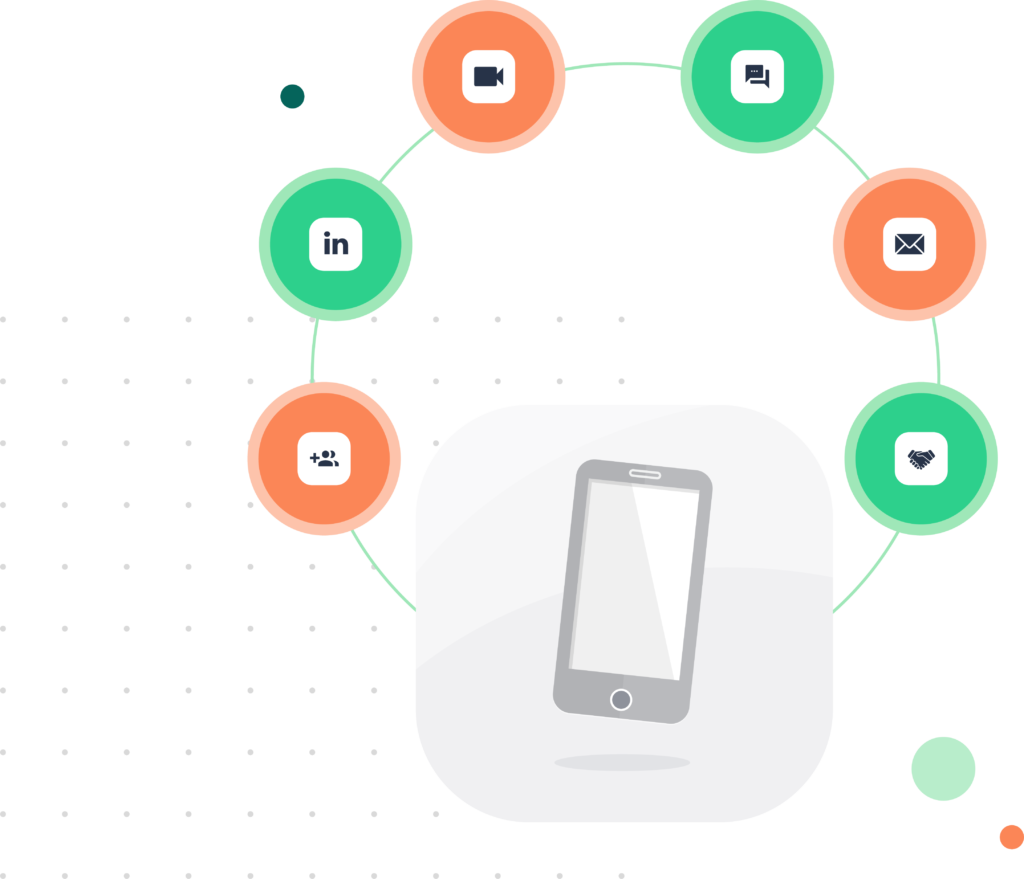
Source : Wydden
You can use telemarketing, emailing or even voice memos to keep trying to reach the prospect. But be careful not to harass them. You don’t want to leave them a pile of messages all day long.
You can recontact prospects you haven’t been able to reach once every 2 months. Needs change, and a prospect who has been less receptive may become interested a few months later. So in the event of a « no » or lack of response, take your time, but don’t give up. Contact the prospect again – this time it could be the right one.
16. Use humour too
Sometimes humour can be an important element in sales. As a salesperson, you can’t expect to be accepted by everyone or that everything will always go according to plan. When you receive a rejection or a prospect becomes unpleasant, laughter can be an excellent way of turning the situation in your favour.
You could, for example, use humorous topics at the very start of the conversation or make funny overtures. This may cause some prospects to reconsider their answer.
17. Don't forget to ask for the appointment
Strange as it may seem, some people forget to ask for the appointment before cutting off the call.
Yet the very purpose of this first interaction is to get the prospect to meet you.
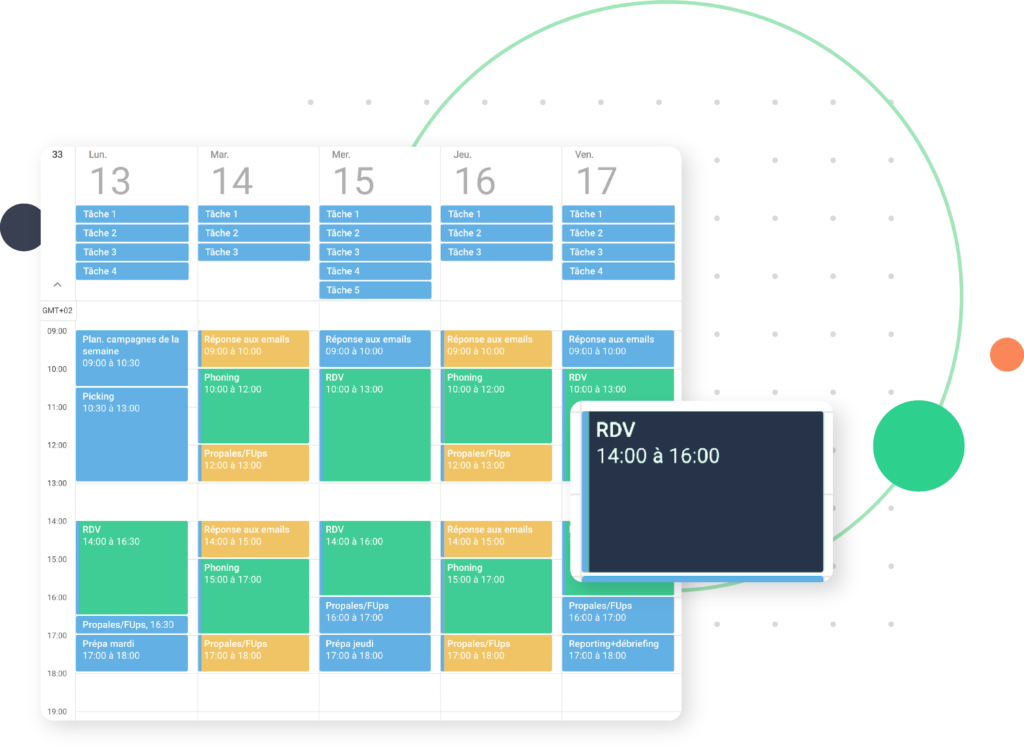
Source : Dse
To request this appointment, here are a few points to consider:
Propose the appointment time directly : When you say « I suggest we meet on Wednesday at 9:30am to talk about this in more detail. Does that work for you? » You’re more likely to get a « yes » from the prospect than when you ask « when can we meet » ?
Decide who will attend the meeting : Who will you send to the meeting ? The same salesperson you used for prospecting ? Or another salesperson ? Or maybe even both ? Decide how many people will be reserved for this meeting.
What will be said at the meeting ? It’s always a good idea to anticipate the important points that will be discussed at the meeting.
Where will the meeting take place ? Will it be a long-distance meeting? Perhaps via Zoom or Hangouts? Or a face-to-face meeting ?
18. Be prepared for questions
Once you’ve hooked a prospect and presented your sales pitch, you need to be prepared for them to ask you a few questions. And so as not to undermine the efforts you’ve made so far, anticipate the types of questions that may be asked.
Together with your in-house team, practice listing all kinds of possible questions and try to come up with clear, concise answers.
19. Use technology to make appointments
Increasing the number of appointments you book also means equipping yourself with the latest technologies. Today, there are a number of practical tools available to help you organise your appointments, for example by :
- Make calls adapted to the prospect’s time zone;
- Classify prospects by qualification criteria;
- Personalise your voicemail;
- Follow-up by e-mail;
- Etc.
These tools include the following:
- Onoff Business : The tool enables you to better manage your mobile fleet, offering flexible tariffs and useful features for business telephony.
With Onoff Business, for example, you can easily and instantly assign business numbers to your sales agents in just a few clicks, without having to order new SIM cards or provide additional cell phones.
Your agents can then take advantage of unlimited calls and text messages to talk easily with your prospects, simply using an app installed on their personal phone.
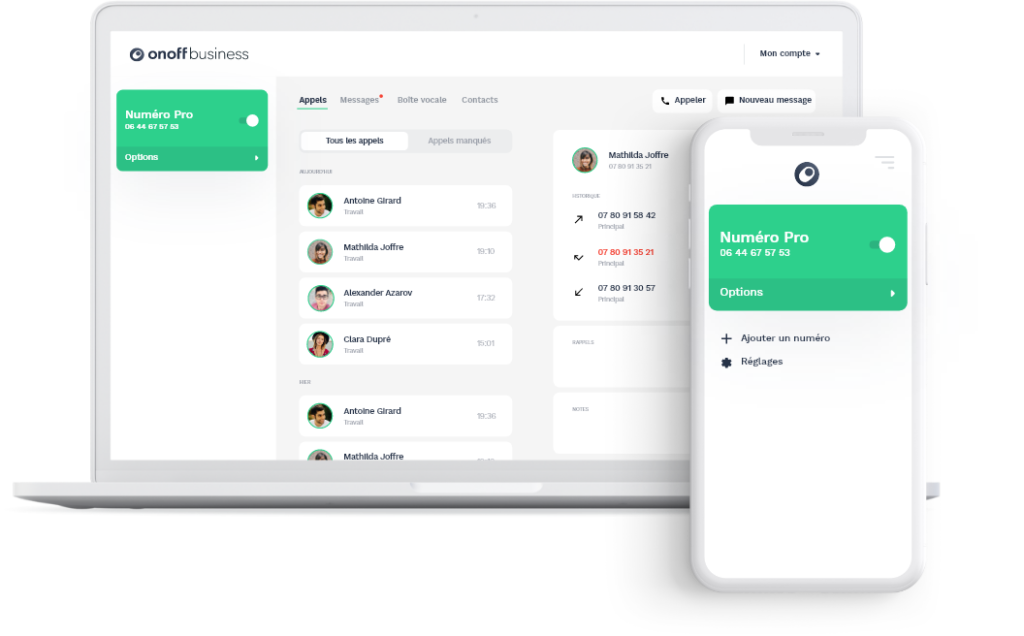
Onoff Telecom also has a consumer offer that allows anyone to get a second number directly on their phone, without necessarily signing up for a new package or having to buy an additional phone.
Just by downloading the Onoff application, you can enjoy unlimited calls and SMS in France and to over 30 other destinations, with no commitment and no hidden costs.
- Calendly : If you’re using an e-mail prospecting strategy, this tool can really come in handy. It lets you insert call-to-action buttons into your e-mails. You can then create a personalised appointment button that your readers can use directly from their inbox.
20. Referrals are a great way to get new qualified appointments
Recommendations from former customers can also help increase your qualified appointments. The fact is, people give more credence to recommendations from a consumer of a product, especially if the person is an acquaintance.
Having someone you know who has already consumed your products give you a glowing introduction to a prospect is always better than approaching them first as a complete stranger.
Inviting your colleagues, associates or friends to talk about your products around them could considerably help you increase your appointments.
21. Practice your sales pitch
In all areas, we agree that the more you practise, the better you get.
The same applies to making qualified appointments : the more you use your sales pitch, the more comfortable you’ll feel during telephone sales calls and the less fear you’ll have of being rejected by prospects.
22. Attract qualified traffic to your website
When we talk about appointment setting, we tend to think more about telephone prospecting, but attracting traffic to your website is also an excellent way of getting new visitors to meet you.
And to achieve this, you essentially have 3 methods at your disposal:
Search Engine Optimisation (SEO) and Google Ads: These two solutions enable you to attract traffic directly from Google results to your appointment-setting pages.

Source : Twaino Agence SEO
With in-depth keyword research, you can target people who are already searching for your products/services on the Net and easily convert them.
The Social Media Optimisation (SMO) or the Social Ads : This is also a form of SEO to attract traffic to your website, but specifically from social networks. Depending on your niche, you can target the networks most used by your target audience. But generally in B2B, the platforms to target are Facebook, Instagram, Twitter and LinkedIn.
The Emailing : Emailing is a form of prospecting delivered directly to the mailbox of prospective customers. When well executed, emailing is also an excellent way of increasing the number of sales appointments you obtain.
23. Use interactive content in your e-mails
It’s proven that using interactive content generates 2 times more conversions than passive content. So instead of sending those traditional static emails, add some creativity to stand out from the other sales prospecting emails the user receives.
You can include call-to-action buttons in the e-mail, allowing the reader to schedule an appointment with your company. You can also insert emojis, images and even videos into your content to captivate your recipient and encourage them to respond.
24. Share positive reviews and testimonials
Statistically, 88% of customers trust online user reviews as much as recommendations from friends and family. Which just goes to show how much the opinions and testimonials of your former customers can influence the opinions of new prospects.

Source : Capterra
By discovering that your products or services have been praised by other consumers like themselves, they’ll naturally be more inclined to contact you.
25. Manage timing strategically
Successfully securing new meetings with potential customers also means approaching them at the right time to avoid disturbing them while they’re busy.
This means being strategic in your time management and anticipating your prospects schedules.
The best time to send an e-mail, for example, is in the morning. People generally check their inboxes early in the morning for new messages.
As for phone calls, the best times to get a good conversion rate are Wednesdays and Thursdays from 11am to 12pm and from 4pm to 5pm.
Wednesday and Thursday because at the beginning of the week, people are more preoccupied with how to get their work week off to a good start, and from Friday onwards, they’re feeling overwhelmed and will be looking to quickly get rid of everything that revolves around their job.
26. Learn from your mistakes
If you’ve read most of the tips above, you’ll probably have noticed that the human factor comes up almost every time.
And the best way to master this factor is to gain experience. Your victories and failures are an invaluable source of resources to help you get more and more appointments.
Which prospecting approach generates the most appointments ? What was your worst mistake ? How do you evaluate your customer’s journey ? These are just some of the questions you need to ask yourself, so that you can question your strategy and continually improve.
27. Track performance indicators (KPIs)
It’s important to keep track of KPIs such as the conversion rate of your appointment bookings or the number of prospects you’ve managed to convert into customers.

Source : Efficy
This will enable you to identify the weaknesses and strengths of your prospecting strategy. Weak points can be reviewed, and strong points improved, to achieve even better results.
Tracking key performance indicators (KPIs) will also enable you to quantify your return on investment, so you can better manage the resources you allocate to appointment setting.
28. Make it easy for your customers to book appointments
There are many companies who invest time and fortunes in creating call lists, followed by gigantic marketing campaigns. Yet when a potential customer visits their website, it’s difficult for them to connect and book an appointment.
To avoid these kinds of mistakes, make sure :
Have clearly visible call-to-action buttons on your website, such as “MAKE AN APPOINTMENT” or “BOOK YOUR APPOINTMENT NOW” ;
Integrate scheduling software to make appointment scheduling even easier.
29. Set up a follow-up system so you don't forget scheduled appointments
Imagine you’ve made every effort to get an appointment with a prospect, and because you’re not organised enough, you forget to keep it.
Well, unfortunately, this is what happens in many companies. According to figures from a recent survey, 15% and 35% of scheduled appointments never take place.
That’s why we need a tracking system to keep track of all your scheduled appointments.
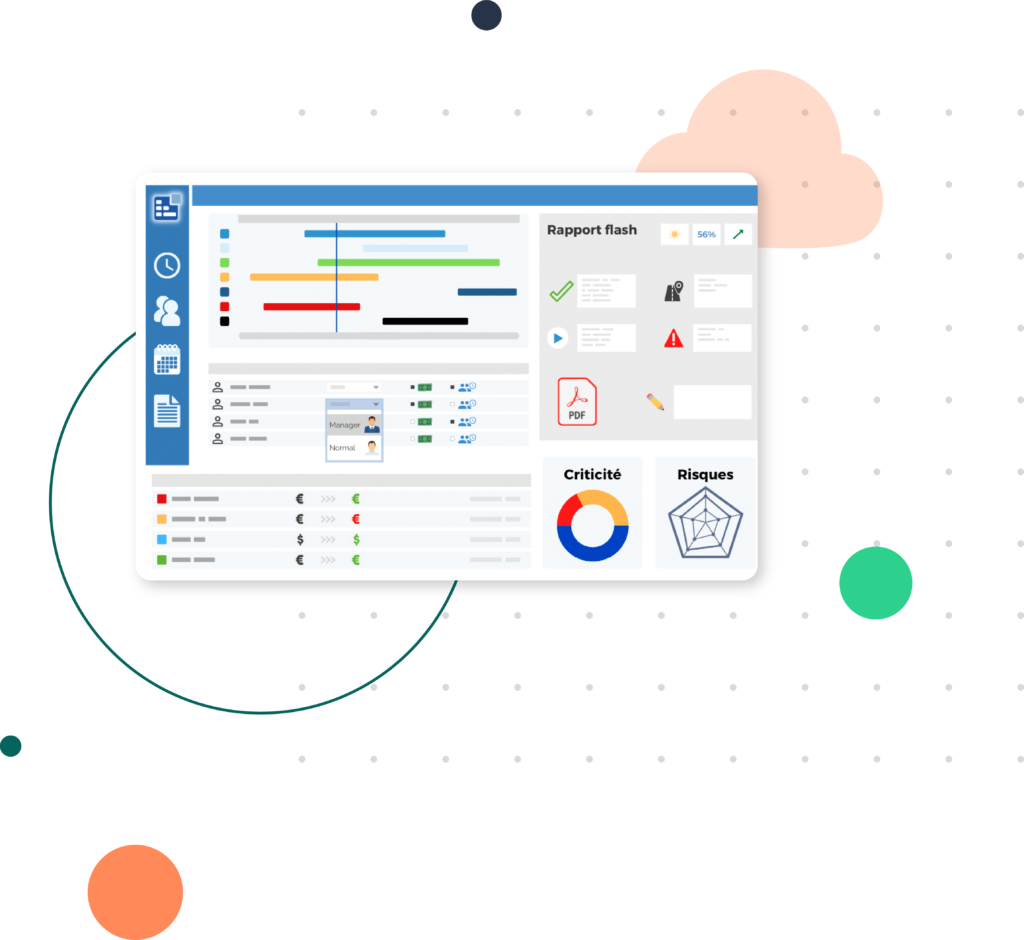
Source : Codeur
To alleviate this problem, you can use scheduling software to keep track in real time.
30. Call on a team of appointment scheduling professionals
Let’s face it, making appointments isn’t always easy, especially when you have fewer skills in the field, or when you’re not available enough to prospect for potential customers and arrange meetings.
In such circumstances, you can opt to outsource appointment setting to a competent professional team. This way, you can really benefit from making appointments with qualified professionals and avoid the mistakes of beginners.
Frequently asked questions
What is cold calling ?
Telephone prospecting, also known as phoning, is a set of sales and marketing steps designed to convince potential customers during a telephone call.
What do you need to know about a prospect before you call ?
- Name
- Job title
- The company he works for
- Company profiles on social networks
- Career path
- Recent offers from the company
- Shared acquaintances (if possible)
- Their history with your company (if possible)
When should you start cold calling ?
Studies have shown that the best times to call a prospect are from 11am to 12pm and from 4pm to 5pm on Wednesdays and Thursdays.
How do you get a customer meeting?
- Define an objective
- Define your target audience
- Research the prospect before calling them
- Write a good script and sales pitch
- Be assertive
- Always ask if the prospect is available before you start
- Introduce yourself in a few seconds
- Keep it professional but natural
- Don’t forget to ask for the appointment
- Use technology to make it easier to book appointments
- Set up a follow-up so that you don’t forget scheduled appointments
- Monitor KPIs to improve your prospecting strategy where possible
What are the different types of prospecting?
- Cold email
- Social selling
- SEO referencing
- Telemarketing
- Advertising
- Physical meetings (seminars, conferences, trade fairs, etc.)
Conclusion
Without appointments, there will probably never be a sale. That’s why you also need to devote enough time to your prospecting strategy and making appointments.
Together, we’ve reviewed 30 tips you can follow to improve your awareness campaign and get more meetings with potential customers.
Articles récents :

